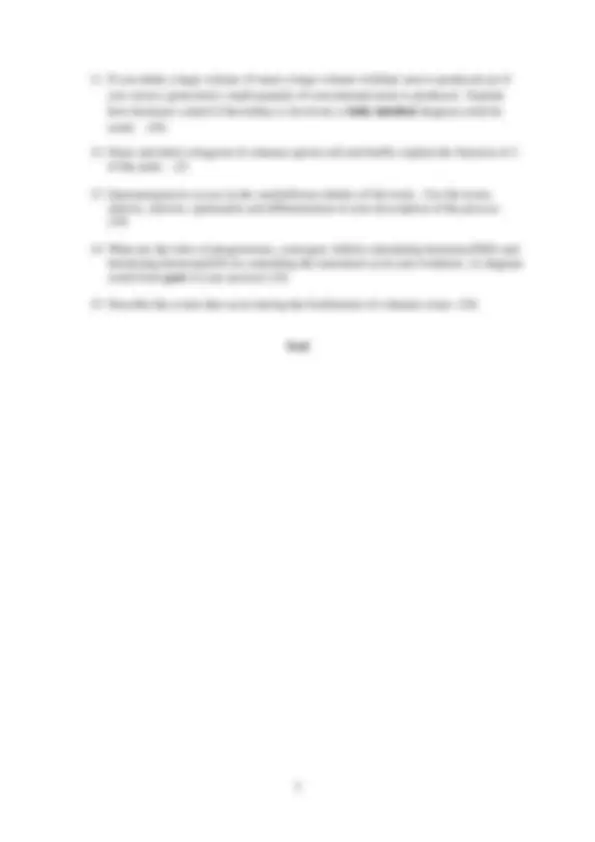



Study with the several resources on Docsity

Earn points by helping other students or get them with a premium plan


Prepare for your exams
Study with the several resources on Docsity

Earn points to download
Earn points by helping other students or get them with a premium plan
Community
Ask the community for help and clear up your study doubts
Discover the best universities in your country according to Docsity users
Free resources
Download our free guides on studying techniques, anxiety management strategies, and thesis advice from Docsity tutors
Exam questions from the university of aberystwyth, institute of biological sciences, for the module bs00510 - biological coordination & function, semester 2 examinations 2009. The questions cover topics such as the circulatory system, heart function, haemoglobin, carbon dioxide transport, insulin and glucagon, transpiration, plant anatomy, organic solute transport, kidney function, and hormone control. Students are required to answer all questions, with some questions including diagrams.
Typology: Exams
1 / 2

This page cannot be seen from the preview
Don't miss anything!


Time allowed – 2 hours
Answer all of the following questions Numbers in brackets indicate marks for each question
Node (SAN), the Atrio-ventricular Node (AVN) and the Bundle of His/ Purkinje fibres. (10)
and the mechanisms that are involved. (5)
10 Explain how the kidneys filter the blood and produce urea. Include an explanation of the terms ultra-filtration and selective re-absorption. (10)
Turn over
11 If you drink a large volume of water a large volume of dilute urea is produced yet if
you sweat a great deal a small quantity of concentrated urine is produced. Explain how hormone control if the kidney is involved, (a fully labelled diagram could be used) (10)
12 Draw and label a diagram of a human sperm cell and briefly explain the function of 3 of the parts. (5)
13 Spermatogenesis occurs in the seminiferous tubules of the testis. Use the terms: mitosis, meiosis, spermatids and differentiation in your description of the process. (10)
14 What are the roles of progesterone, oestrogen, follicle stimulating hormone(FSH) and luteinizing hormone(LH) in controlling the menstrual cycle and ovulation. (A diagram could form part of your answer) (10)
15 Describe the events that occur during the fertilization of a human ovum. (10)
End